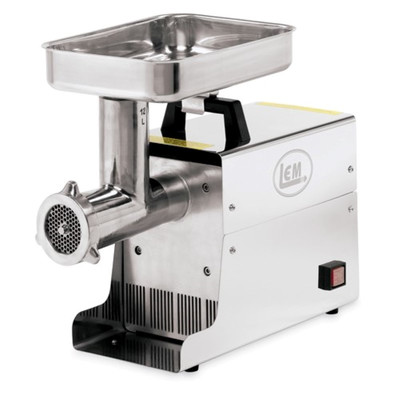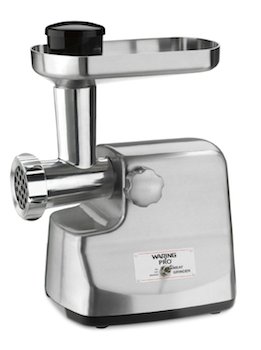The meat slicer is one of the most convenient appliances to be in your kitchen. The appliance itself can save you money and time. Nowadays, there are wide varieties of meat slicers in the market, and it gets confusing and a little exasperating, to choose the right one for you. It takes a lot of time through research and reviews to find the best one, but once you find it, it is worth it.
So, before you find the right one, here is a FAQ about meat slicers guide, regarding meat slicer appliances in general. These ten questions will help you to understand the appliance even better, making it easy for you to use it once you bought it.
- Is the blade in meat slicers of stainless steel?
All of the blades are made from high-quality stainless steel and because of its strength in nature and rust resistance; it is safe to make food. It is one of the most resilient metals that are available for food appliances. Meat slicers with stainless steels are high recommended according to our meat slicer reviews 2016.
2. How to sharpen the blade and if so, do most products come with a blade sharpener?
Because of its stainless steel high quality and serrated blade form, it doesn’t lose its sharpness for an extended period. Not only that, most of the meat slicer appliances doesn’t come with a blade sharpener. However, if you want the blade to be sharpened, any professional knife sharpener could do it. Just run it through the slicer.
3. What are the tips for an easy meat slicing?
First, chill the meat thoroughly before slicing, even if it has an uneven texture, like an uncooked steak, between 30 minutes to an hour. The meat has to be boneless to ensure it doesn’t ruin the blade. Second, do not slice fully frozen meat as it could destroy the appliance. Third, while slicing the meat, exert steady pressure on it while moving the food carriage forward slowly. For more info about how to slice meat, you can read the manual instructions that come with the appliance.
4. Any tips for slicing other kinds of food?
Foods with an uneven surface like boneless fish and cheese should be partially frozen. However, if it’s a soft cheese, wet the blade lightly, either with a water spray or a clean, damp sponge to reduce the cheese friction against the blade. Bread can be sliced at room temperature. All fruits can be sliced and should be free of seeds except tomatoes. Not only that, large foods such as roasts or bacon should be cut half before slicing for a smooth cut.
5. What are the tips for cleaning blade-slicers?
Most of the slicers can be hand cleaned with a cloth and mild soap or spray cleaner. To reach hard spots, clean it with a damped Q-tip. However, to be extra cautious, refer to your instruction manual on what kind of cleaning products can be used. The instruction manual not only gives you specific cleaning instructions but also tips on removing the parts easily.All of our reviewed meat slicers are designed for quick and easy cleaning. Just remember to clean the appliance after being used.
6. Must I clean and sanitise a slicer between slicing different types of deli meats?
Deli meats are categorised as ready-to-eat foods; usually either as preserved, precooked or cooked meats. Therefore, the slicer doesn’t need to clean and sanitise in between slicing different types of deli meats.However, if raw or partially cooked meats were sliced first, remember to clean and disinfect before using it again to slice deli meats or other kinds of food.
7. Are the removable parts dishwasher safe?
Most removable parts can be put in the dishwasher. However, to be extra cautious, pay attention to which parts are listed as dishwasher safe in the instruction manual.
8. Can I adjust the thickness of the slice?
All slicers have numeric thickness control knob that allows you to control or change it. It’s usually located behind the carriage area. The digital system starts from the lowest number (thinner slice) to the highest number (thicker slice). However, if you can’t rely on the numeric setting, you can always judge its thickness by your eye.
9. What is a recessed power button and what does it do?
Most meat slicers have a recessed power button, which makes it less risky if it’s turned on accidentally while moving it around the counter when it’s plugged in. This procedure ensures safety. Not only that, the slicers usually has rubberized feet or suction cups, which can add stability and security. It is a bonus, which works well with the recessed power button.
10. What kind of blade works well for slicing meat?
90% of all meat slicers have serrated blades, and they work well for slicing meat. They are ideally used for thorough thin-cut deli meats and slicing bread, but they can sometimes, leave vegetables with toothed edges instead of a clean slice. Smooth-edged blades, also known as non-serrated blades, are ideally used for slicing lean meats and vegetables. Both blades have their benefits. Almost all meat slicers have one blade, usually installed with a serrated blade. So if you want to switch it with a non-serrated blade, you can always buy an additional blade, depends on what kind of meat slicer you have. You can always call customer service or look through the appliance website, to get more information regarding about it.
Overall, if you have more concerns or questions regarding about the meat slicer appliances, you can go through their FAQs section on its website or post a question in comment/review section. They are more than happy to answer any inquiries.
Don’t forget to check out our best meat slicers reviews and guide for 2016.


